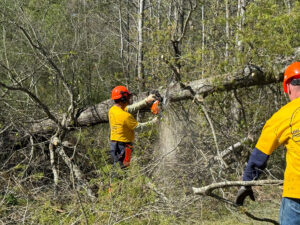While living in Gilroy, California, my wife and I purchased a home with a pool. Not that we wanted a pool, but it came with the house. Gilroy is considered to be in part of one of only four regions in the world with a Mediterranean climate. While temperatures rise into the 90’s in the daytime in summer, they will fall into the low 60’s at night with very low humidity. This is great in almost every situation, except for an above-the-ground pool owner.
Since the temps vary so much, the water temperature never warmed up in our pool. The top four inches of water were nice and warm. But the remaining 3 ½ feet of water was always cold. Pam and I realized that if we could overcome the initial shock of the cold, we could spend the first five minutes in the pool walking in circles around the perimeter stirring the water until it warmed enough to enjoy the pool. We also found that when we both entered the cold water we could stir it to warmth in a shorter time and enjoy the benefits together. To arrive at the desired condition required to first stir the water. But it certainly required adjusting to the initial shock of the cold water.
Leading a church (or other organization) through transition has great similarities to the pool of cold water. Effective leaders are often stirring the waters. They also recognize the more people who join in the stirring, the quicker arrival for the desired outcomes that everyone can enjoy. At issue for leaders is convincing others to take that initial plunge into the unknown cold temperatures. People’s nature is to remain in the warmth of their present comfort rather than plunge into the cold waters of what could be a promising future.
Casting a vision of what the warm waters will be like is an invitation to excel beyond the existing organizational conditions and circumstances. While 80% of our churches are in decline or plateaued, every church could use improvement to become more effective in fulfilling the Great Commission. Casting vision often requires raising the bar of service and engagement. This is the cold plunge that people are averse to.
One trait of effective leadership is properly elevating the sense of urgency. When the leader can lead the organization to a genuine understanding of the urgency on each person, results will begin to climb. The water is being stirred by more than the leader and the desired outcomes are close at hand. Creating the understanding of a sense of urgency is key.
Someone has said, “The only issues you will solve are the ones you engage.” When leaders are unwilling to initiate the stirring of the water, desired outcomes will never be seen in or through the organization. To lead means to step out and bring others along with you. Organizations flourish or are plundered (from within) based on the leadership’s willingness to “stir things up”.
Many churches are operating out of the practices of the 1970s or 1990s. It’s time to stir the waters of biblical practices. Today how will you prayerfully ask God to use you in stirring for the greater good of your church (organization)? Not of your own personal preferences, but to assist your church in becoming more effective in truly fulfilling the Great Commission.







 by
by